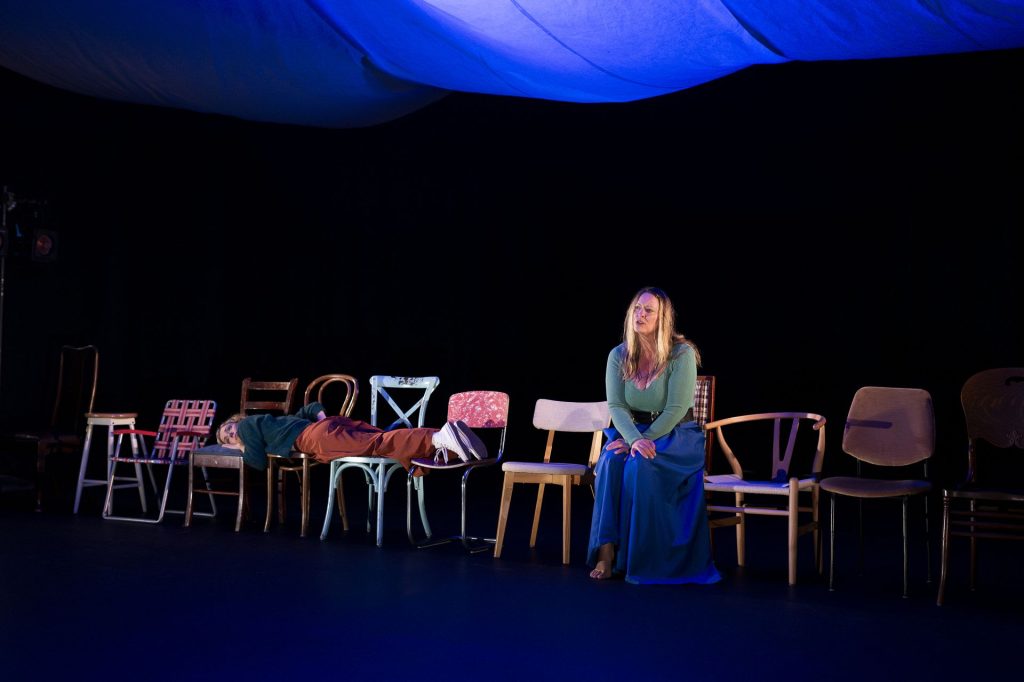Conventions, Strategies and Approaches of Catastrophes
Catastrophes is an autobiographical contemporary performance, in which Renée Newman and Ella Hetherington play themselves, rather than characters, in an abstract world with a strong emphasis on image and sound. They share brutally honest truths with each other and the audience in an authentic collection of vignettes.
Contemporary performance spans different disciplines such as experimental theatre and dance, video art, visual art and music composition. It has an open form and doesn’t stick to a specific field.
About Catastrophes
Text and Language
Like much contemporary performance, Catastrophes is non-narrative. There is no straightforward plot or storyline, nor is there a main character with an explicit goal.
The performers speak to the audience in direct address and to each other, in both monologue and dialogue. Different styles of language are used, such as heightened poetic language, along with causal/conversational language and fast-tempo rapid-fire spoken word.
The script writing process began with Renée and Ella’s late-night text messages to each other. From there, they set each other specific writing tasks and collected conversations, messages and text from the public domain such as newspapers and TV series.
This is an example of verbatim theatre, based on the spoken words of real people sourced from recorded and transcribed interviews or conversations. The stories about real events and people in forms of documentary theatre like Catastrophes are sourced from existing documentary material.
This approach has been used to link global catastrophes such a climate change, war and populist politics to the personal catastrophes Renée and Ella’s have experienced in their daily lives as both parents and humans. The result is part observational comedy about motherhood and friendship and part tragedy about impending global collapse – balancing fearfulness with humour, hope and care.
Set, Lighting and Sound Design
The set, lighting and sound design add to the sense of space, mood and atmosphere in Catastrophes. The performers converse while seated or moving various chairs beneath a large canopy of cloth suspended from the roof by strings and pulleys.
Designed by Mark Haslam, the canopy rises and falls in fluid shapes like a wave as the lighting upon it creates a wall of colour. Ben Collins’ ambient sound design moves from dreamy soundscapes of waves to shocking noises.
White noise carries a sense of anticipation and unease (fridges, power lines etc.), while the oppressive squeal of a train on dry tracks creates tension when juxtaposed with the poetic language.
Similarly, the slow billowing movement of the canopy sits in contrast with the fast-paced dialogue. Warm coloured lighting upon the moving cloth lifts and elevates the audience, whereas cool colours calm and distance the audience.
The chairs are both a functional device used by the performers to move up and down the space and change height, and act as a metaphor for support and help.
Thank You to Our Supporters
Catastrophes was commissioned by PICA and supported by PICA’s Art Commissioners and the WA Government through the Department of Local Government, Sport and Cultural Industries.






